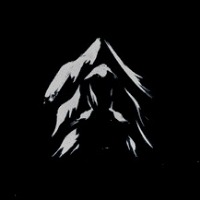aisforanagrams said: Eunomiac said: The GM Layer is there for more than just storage: It's where I put various notes and text object alerts that only I should see, with the gm layer opacity set to something above zero. sure, but the point is you can use it to "store" tokens not currently being used. i do this generally since with DL layer, it can affect the lighting AND you can't see the tokens unless you're in DL layer (which is a pain if you want to quickly locate it). i even use the GM layer to move pieces of DL walls that i want to reveal. GM layer is versatile and is completely invisible to the players (with DL layer this isn't true since tokens CAN affect lighting). Yep, but in my case (where none of my tokens use light and I don't use path objects), the walls/lighting layer really is ideal storage. I too use the GM layer to store assets I want to reveal or access manually; the walls/lighting layer is strictly used for objects I control via API scripts: I simply have toggle() functions that switch the layer to "walls" (if toggling off) or back to its active layer (set in the object's registry entry in my state variable). However, because I'm now considering polishing some of my scripts up for community release, I wanted to see if there were better options that would work for players who do make use of the lighting layer. Currently, if my understanding is correct, it is safe to store absolutely anything on the "walls" layer except: graphic token (i.e. non-drawing) objects that emit light path objects For the former, I'll disable any light emission when toggling tokens off, and store their "active lighting" settings in their registry entry so I can restore them when toggling the object back on. For paths, I'll just record all of the data defining the path (color, points, etc) and destroy it on toggle off/recreate it on toggle on. If I combine that with a "temporarily move all toggled-off objects from the walls layer to the gmlayer so you can work on your dynamic lighting stuff in peace" function, I think I've covered all my bases. Laurent said: You can also move the object outside of the map, on the same layer. Then they won't be displayed, but still be there. It requires API scripting to do that and get them back, of course. I'm up to 40,000 lines of custom code over 21 API scripts, so scripting is no problem --- quite the opposite, lol. I considered your method, but the problem is I'm unsure how/when Roll20 and various browsers load images. I'm fairly certain that images stored on the walls layer will not be loaded by the browser (which is a good thing, as there are a lot of graphic and text objects stored there, including several webm animations), but I'm not so sure that shifting the images so they exist outside the pixel bounds of the sandbox will stop browsers from loading them. Do you happen to know?



















